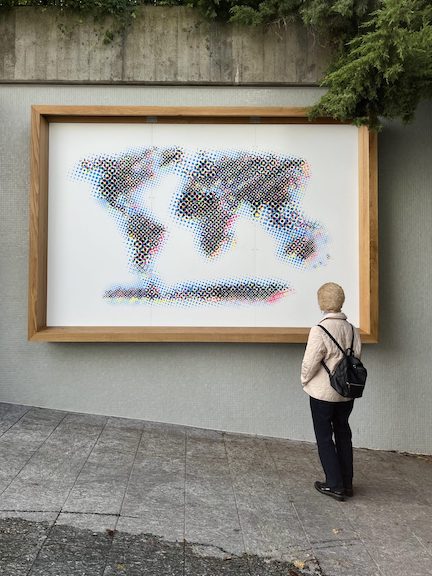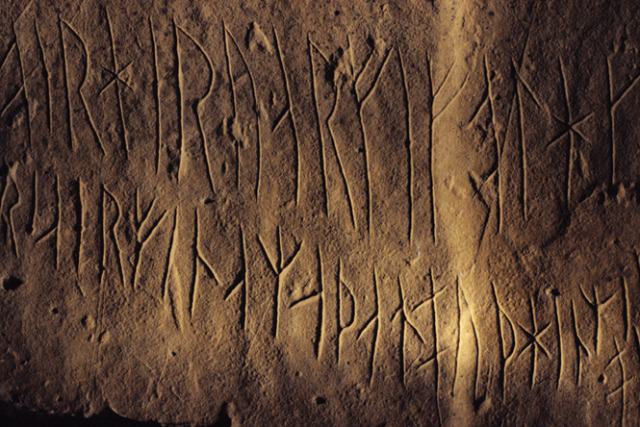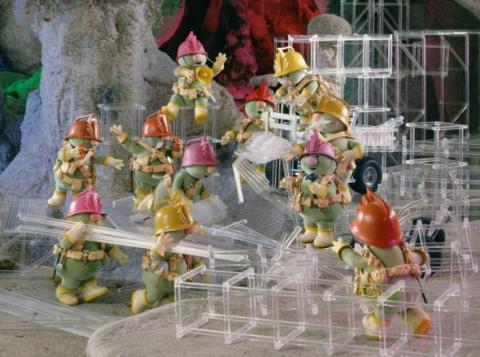Since 2002 (updated often), your old-school website for all things stencils. Photo, video, links, and exhibit info submissions always welcome. Enjoy and stay curious.
Donate any amount to support this DIY site.
Buy Stencil Nation or take a tour
Our best photos on Instagram and flickr.
Late Sep Artist Uploads

Heading into Fall with some featured artists...
Thanks to Jaime Rojo at Brooklyn Street Art for some of these.
>NEW< Rad Originals
Strok (just one)
John Fekner (just one)
Misstencil (just one)
Snik (just one)
Savior el Mundo (just one)
M-City (just one)
JPS (just one)
Shepard Fairey (just one)
Stefan Winterle says goodbye to Colab Gallery

After 14 successful years: Stefan Winterle says goodbye to Colab Gallery
Stefan Winterle (his Stencil Archive, and his website) says goodbye after 14 years as curator of the Colab Gallery in Weil am Rhein. During this time he curated 25 exhibitions with over 250 artists from Europe, the USA and Latin America.
Nach 14 erfolgreichen Jahren:
Stefan Winterle verabschiedet sich von der Colab Gallery
Stefan Winterle verabschiedet sich nach 14 Jahren als Kurator der Colab Gallery in Weil am Rhein. Während dieser Zeit kuratierte er 25 Ausstellungen mit über 250 Künstlern und Künstlerinnen aus Europa, den USA und Lateinamerika.
"I am grateful to have had the opportunity to inspire a growing audience for graffiti and street art culture." In 2010, Stefan Winterle took over the artistic direction of the gallery, founded in 2006, from his mentor and friend Sigi von Koeding a.k.a. Dare, who died at an early age. Stefan Winterle consistently developed his concept of presenting graffiti culture in exhibitions. Discovering talents and inviting them to the Colab Gallery was an essential element of success. Another element was the goal of making the Colab Gallery a sought-after address internationally. More than 250 artists stand for this success, some of whom have graced the walls of the Colab Gallery several times.
"The quality of the works was more important to me than names," says Stefan Winterle, who consistently followed his credo. Thus, Colab Gallery can claim to be setting the tone in European competition. "We are a gallery and not a museum," as a graduate in business administration, Stefan Winterle also had to consider the economic side of the gallery.
For him, this meant building up a professional team. That is why Colab Gallery today can also be called an art house.
The management and the colleagues of Colab Gallery thank Stefan Winterle for his commitment. His successor has already been appointed. A separate announcement will be made shortly.
And why is Stefan Winterle leaving the gallery? "Fourteen years in a young art direction is a long time. Many projects are waiting in my studio, which I could otherwise only realize between exhibitions. These works are now my full devotion." I look forward to that.
Rad Originals (CA)
Making murals and cutting stencils in Edomonton, AB, CA.
New Uploads - A Bit of This...
...and a bit of that!

Thanks to: Dylan Pitman; Josiah; Lynn Ray; Jeremy Novy; Brooklyn Street Art; @Louniki_; @radicalgraffiti; @regoef; @mensch_huis; trifluoracetic-acid; FICKxDINGERZ
Spinning: Foo Fighters, The Chieftans; 85 Maiden, 85 Dead
>NEW< Connecticut
>NEW< Savior el Mundo (NYC)
>NEW< Gary Taxali (CA)
Edmonton CA finally represents!
Black Rock City porta-potty art
Joe Iurato and Logan Hicks
Italy (just one)
Valencia St. (just one)
Revamped the Burning Man Archive

Stencil Archive's Burning Man - Black Rock City archive has been cleaned up and updated!
I don't head out to Black Rock City anymore, but I do enjoy following the fun every year. I know that Jeremy Novy and fnnch go out there to make art and have fun, and I can only assume that stencils are still all over the place at Burning Man. My first time out, I was unprepared for my usual urban habit of snapping pics of stencils. My camera evolved over the preceding visits: disposable film > borrowed digital with memory card > old iPhone; but I managed to catch stencils during my wanderings. Every year I attended. And I started cutting and painting my own out there as well.
After helping a few first timers this year, and following the fun again online, I took a look at my BRC archive here on Stencil Archive and realized that it was a bit of a mess. I thought I'd move a few photos, reorder a bit more, and call it done, but I ended up renaming dozens of images. I then decided to reduce to my preferred size and add the logo watermark. While I was doing all this work, I have renamed the archive for Nevada and BRC.
Enjoy the new and improved Burning Man stencil love. And, like a DPW stencil said in 2006: If "you're not dirty enough," then you aren't having enough fun out there. :)
SF 2023 State of Graffiti Tagging
How SF is aiding businesses clean persistent graffiti
SF Examiner (Link, with maps and graphs)
A parklet, a storefront, a billboard.
Graffiti pops up across The City seemingly as fast as it’s removed.
The City launched a pilot program to help businesses clean up graffiti last November in a press conference that featured Mayor London Breed painting over graffiti scrawled over a vacant brewery in the Inner Sunset.
Less than a year later, graffiti still abounds in not only the Inner Sunset but other San Francisco neighborhoods as well.
The $2 million “courtesy graffiti abatement” program was funded for a second consecutive year in The City budget adopted by legislators and signed by Breed last month. It employs workers who will respond to businesses that report tagging on their buildings.
Late-July 2023 Photo Uploads

Thanks to: Esmeralda; Kellan and Maddie; Brooklyn Street Art; @Louniki_; @radicalgraffiti; @regoef; @mensch_huis; trifluoracetic-acid; FICKxDINGERZ
Spinning: PetroDragonic Apocalypse and a DJ Pod 2000 birthday mix-tape
Austria (just one)
Canada (just one)
Illinois, USA
Peru (just one)
Philly, USA (just one)
Viking Graffiti in Scotland
Maeshowe's Runes - Viking Graffiti

When Maeshowe was first excavated, in 1861, the chamber's original entrance passage was inaccessible.
So, to allow access, the excavators drove a shaft down through the top of the mound. Once inside, however, they found proof that that they were not the first to have broken into the tomb. The walls of the Stone Age chamber were covered in with runic graffiti.
The 30 inscriptions found in Maeshowe, make it one of the largest, and most famous, collections of runes known in Europe.
According to Orkneyinga saga, over 800 years previously, in the darkness of an Orkney winter, a group of viking warriors had sought shelter from a terrible snowstorm.
Leading the men was Earl Harald, who, at Christmas, 1153, was making his way from Stromness to the parish of Firth.

